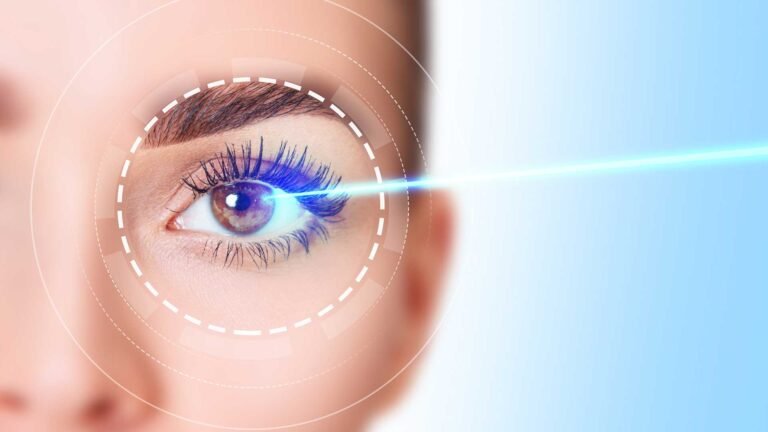If you’re considering laser vision correction, understanding how LASEK surgery works can help ease any anxiety and give you confidence in the procedure. LASEK (Laser-Assisted Sub-Epithelial Keratectomy) is a popular alternative to LASIK, especially for patients with thin corneas or dry eyes. In this guide, we’ll walk you through the entire LASEK process—from consultation to recovery—so you know exactly what to expect.
What Is LASEK?
LASEK is a type of refractive eye surgery that uses an excimer laser to reshape the cornea and correct vision problems like myopia (nearsightedness), hyperopia (farsightedness), and astigmatism. Unlike LASIK, which involves creating a corneal flap, LASEK preserves more of the cornea by lifting only the thin epithelial layer.
Step-by-Step: How LASEK Surgery Works
1. Pre-Operative Evaluation
Before surgery, you’ll undergo a comprehensive eye exam to determine if you’re a good candidate for LASEK. This includes:
- Corneal thickness measurement
- Pupil size assessment
- Tear film analysis for dry eyes
- Wavefront analysis to map your eye’s unique imperfections
Your eye surgeon will also review your medical history and current medications to ensure safe treatment.
2. Anesthesia and Preparation
On the day of surgery:
- Numbing eye drops are applied to keep you comfortable.
- A lid speculum is used to gently hold your eyelids open.
- The eye area is sterilized to reduce infection risk.
3. Epithelial Loosening and Removal
Here’s where LASEK differs from LASIK:
- A solution (usually diluted alcohol) is applied to the eye for about 30 seconds to loosen the epithelial layer (the thin outermost layer of the cornea).
- The surgeon then gently slides the loosened epithelium to the side to expose the underlying corneal tissue.
4. Laser Reshaping
With the cornea exposed:
- A cool excimer laser is used to precisely reshape the corneal stroma based on your customized treatment plan.
- This step typically lasts less than a minute per eye.
The goal is to adjust the way light enters your eye and focuses on the retina, improving your vision.
5. Epithelial Repositioning
After the laser treatment:
- The epithelial flap is carefully moved back into place over the treated area.
- Although this layer does not fully “reattach,” it will begin to heal and regenerate over the next few days.
6. Protective Contact Lens Placement
To aid healing:
- A soft, bandage contact lens is placed on the eye to protect the surface and reduce discomfort.
- This lens usually stays in place for 3–5 days, until the epithelial layer has healed.
7. Post-Operative Care
After surgery, you’ll receive:
- Prescription eye drops (antibiotics, steroids, lubricants)
- Detailed aftercare instructions
- A schedule of follow-up appointments to monitor healing
You may experience mild to moderate discomfort, light sensitivity, tearing, and blurry vision for the first few days.
Recovery Timeline
| Time Frame | What to Expect |
|---|---|
| Day 1–3 | Discomfort, blurred vision, sensitivity to light |
| Day 4–7 | Contact lens removed, vision gradually improves |
| Week 2–4 | Clearer vision, fewer side effects |
| Month 1–3 | Final results stabilize, full visual clarity |
Is LASEK Right for You?
LASEK is often recommended if:
- You have thin corneas
- You’re at risk for ocular trauma (athletes, military)
- You suffer from chronic dry eye
- You want a surface-based laser treatment with fewer flap-related complications
Your ophthalmologist can help you determine if LASEK is the safest and most effective choice for your vision needs.
[Optional Visuals for Better Understanding]
To enhance this guide, consider adding:
- Diagram 1: Cross-section of the eye showing corneal layers and the laser application area.
- Diagram 2: Step-by-step visual of the LASEK procedure (epithelial removal, laser reshaping, and repositioning).
- Short Video (1–2 minutes): Animated walkthrough of how LASEK surgery works.
Final Thoughts
Now that you know how LASEK surgery works, you can make a more informed decision about your vision correction options. While the recovery may be a bit longer than LASIK, the procedure offers excellent results with minimal risk for patients who aren’t ideal candidates for flap-based surgeries.
Always consult with a qualified ophthalmologist to discuss your specific eye condition and get personalized recommendations.




